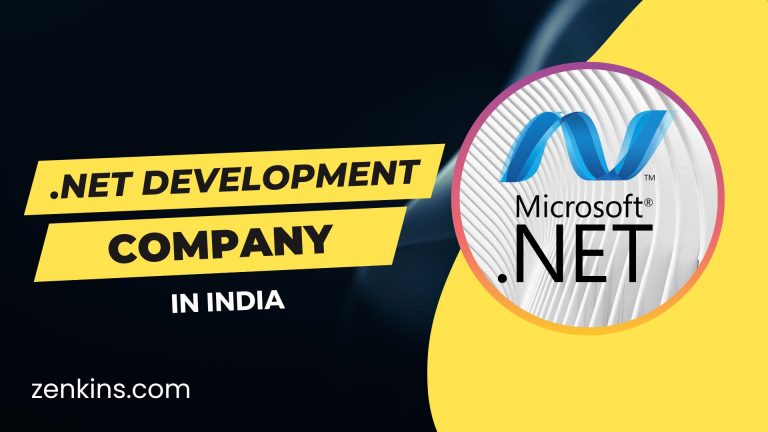Payment Processing Software: From Cash to Digital
Table of Contents
The way we make payments has undergone a remarkable transformation over the years, transitioning from traditional cash-based systems to the digital realm. This evolution has been driven by advancements in technology and changing consumer preferences. In this article, we will explore the journey of payment processing, from the barter system and introduction of cash to the digital payment revolution we are experiencing today.
We will delve into the benefits of payment processing software, discuss key features and functionality, and provide insights on how to choose the right software for your business. Additionally, we will examine the implementation process and offer a glimpse into the future of payment processing. Join us as we navigate the fascinating world of payment processing and its transition from cash to digital.
Introduction: Evolution of Payment Processing
The introduction to this captivating topic takes us back to the early days when bartering was the prime mode of transaction, followed by the introduction of coins and paper money. Fast forward to modern times, with advancements in technology leading to electronic payments, such as credit cards and online transfers.
We’ve seen a revolution in recent years with contactless payment options like mobile wallets and cryptocurrency becoming more popular. This evolution has not only made transactions faster and more convenient but also reduced the reliance on physical currency. In today’s fast-paced world, it’s intriguing to see how payment processing continually adapts to accommodate changing trends in consumer behavior and technological innovation. So, buckle up for an enlightening journey through the dynamic realm of payment processing!
The Need for Payment Processing
Payment processing has come a long way from the days of bartering and lugging around sacks of gold coins. As society evolved, so did the need for more efficient and secure ways to exchange value. Enter payment processing, the unsung hero behind every transaction we make today. Whether it’s buying groceries, booking a vacation, or binge shopping online, payment processing software ensures that money moves seamlessly from one party to another.
Traditional Cash-Based Payment Systems
Barter System and Introduction of Cash
Once upon a time, people relied on the barter system, swapping goods and services directly. But carrying around a herd of sheep to trade for your groceries wasn’t exactly convenient. So, humanity got creative and came up with cash—a physical currency that represented the value of goods and services.
The Role of Banks and Checks
As societies grew more complex, banks emerged as the guardians of our cash. They introduced checks, a fancy way of saying, “Hey, bank, pay this person on my behalf.”
Credit and Debit Cards
Then came credit and debit cards, the superheroes of modern payment processing. Swipe, sign, and voila! The transaction is complete, and you can go on your merry way.
Digital Payment Revolution
Emergence of Online Payments
With the rise of the internet, a whole new world of payment possibilities opened up. Online payments became the norm, enabling us to shop in our pajamas from the comfort of our couches. Suddenly, physical distance didn’t matter, and we could effortlessly send money across borders with a few clicks.
Mobile Payment Solutions
Not content with just online payments, technology continued to innovate. Mobile payment solutions entered the scene, allowing us to tap our smartphones or smartwatches to pay for that morning coffee. No more fumbling for cash or cards in crowded cafes.
Cryptocurrencies and Blockchain Technology
Then, cryptocurrencies like Bitcoin burst onto the scene, fueling the imagination with the idea of decentralized, secure, and anonymous digital transactions. Blockchain technology, the underlying technology of cryptocurrencies, promised a new era of transparency and trust in payment processing.
Benefits of Payment Processing Software
Improved Efficiency and Accuracy
Nowadays, payment processing software is the unsung hero that keeps our digital lives running smoothly. With superior efficiency and accuracy, it ensures that our payments are processed swiftly and without error. No more counting coins or waiting for checks to clear.
Enhanced Security and Fraud Protection
And let’s not forget about security. Payment processing software has become a fortress against fraudsters, protecting our hard-earned money from falling into the wrong hands. From encrypted transactions to two-factor authentication, our financial data is locked up tighter than a jar of pickles.
Access to Real-Time Reporting and Analytics
But wait, there’s more! Payment processing software gives us access to real-time reporting and analytics, allowing businesses to track sales, identify trends, and make data-driven decisions. It’s like having our own personal finance team but without the fancy suits and office banter.
Key Features and Functionality of Payment Processing Software
Payment Gateway Integration
Think of payment gateway integration as the passport that allows your business to securely collect payments online. This feature ensures that your customers can make transactions smoothly and securely by connecting your website or app to the necessary payment networks.
Multiple Payment Options
Gone are the days when cash ruled supreme. Payment processing software enables your business to accept a variety of payment methods, from credit cards and debit cards to digital wallets like Apple Pay and Google Pay. By offering multiple options, you increase the convenience and flexibility for your customers, ultimately boosting sales.
Recurring Billing and Subscription Management
If your business offers subscriptions or recurring billing services, this feature is your best friend. Payment processing software can automate the collection of recurring payments, offering convenience to both you and your customers. Say goodbye to manual invoicing and hello to a smoother revenue stream.
Choosing the Right Payment Processing Software for Your Business
Assessing Business Needs and Requirements
Before diving headfirst into the world of payment processing software, take a step back and consider what your business truly needs. Are you a small e-commerce store looking for a simple solution or a multinational corporation with complex payment flows? Understanding your unique requirements will help you narrow down the options.
Comparing Pricing and Fees
No one likes hidden fees or unexpected charges, so it’s crucial to carefully consider pricing structures. Take the time to compare different payment processors and understand their fee structures. Look out for transaction fees, monthly fees, and any additional costs that may eat into your profits. Remember, it’s not just about the lowest price, but also the value you receive.
Integration with Existing Systems
Seamless integration is key when implementing payment processing software. Consider how well the software will work with your existing systems, such as your website, customer relationship management (CRM) tools, or accounting software. The easier the integration, the less headache and downtime you’ll experience.
Implementing Payment Processing Software: Tips and Considerations
Staff Training and Support
Introducing new software to your team can be a daunting process, so don’t neglect the importance of proper training and ongoing support. Make sure your payment processing provider offers comprehensive training materials, responsive customer support, and resources to troubleshoot any issues that may arise.
Testing and Quality Assurance
Before going live, thoroughly test your payment processing system to iron out any kinks. Simulate different scenarios, process test transactions, and ensure everything works smoothly. Don’t forget to test for compatibility across various devices and browsers to provide a seamless experience for your customers.
Compliance and Regulatory Considerations
Payment processing involves sensitive financial information, so compliance with industry regulations is crucial. Ensure that your chosen software adheres to the necessary security standards, such as PCI DSS (Payment Card Industry Data Security Standard). Staying compliant not only protects your customers but also helps maintain your reputation.
Future Trends and Developments in Payment Processing
Biometric Authentication
Forget about remembering countless passwords or PINs. Biometric authentication, such as fingerprint recognition or facial recognition, is becoming more prevalent in payment processing. This technology enhances security and provides a convenient and touchless way for customers to confirm transactions.
Internet of Things (IoT) Integration
The Internet of Things, with its interconnected devices, extends its reach to payment processing. Imagine making a purchase directly from your smart fridge or wearable device. As IoT continues to evolve, integrating it with payment processing software opens up new possibilities for seamless and convenient transactions.
Artificial Intelligence and Machine Learning
AI and machine learning are revolutionizing payment processing. These technologies can detect fraudulent transactions, analyze purchasing patterns to offer personalized recommendations, and even automate customer support. Embracing AI and machine learning can streamline your payment processes and enhance the overall customer experience.
In conclusion, the shift from cash to digital payment processing has revolutionized the way we conduct transactions. With the advent of payment processing software, businesses have gained access to enhanced efficiency, improved security, and real-time analytics. As technology continues to advance, we can expect further innovations such as biometric authentication, IoT integration, and AI-driven solutions to shape the future of payment processing.
As a business owner, embracing and adapting to these developments will be crucial for staying competitive in an increasingly digital world. So, whether you are a small retailer or a multinational corporation, staying informed and leveraging the right payment processing software will undoubtedly play a vital role in your success.
So, as we bid farewell to the era of cash and wave hello to the digital revolution, let’s tip our hats to the unsung hero of payment processing software. It may not be as glamorous as the latest gadget or fashion trend, but it keeps the wheels of commerce turning and our wallets a little lighter.
FAQ
Why should I consider switching from traditional cash-based payment systems to digital payment processing?
Digital payment processing offers numerous benefits such as increased efficiency, enhanced security, and access to real-time reporting and analytics. It can streamline your operations, improve customer convenience, and enable you to expand your business beyond physical boundaries.
What key features should I look for when choosing payment processing software for my business?
When selecting payment processing software, it is important to consider features such as payment gateway integration, support for multiple payment options, and functionality for managing recurring billing and subscriptions. Additionally, ensure that the software integrates seamlessly with your existing systems and meets your business’s unique needs and requirements.
How can I ensure a smooth implementation of payment processing software in my business?
To ensure a successful implementation, focus on staff training and support to familiarize your team with the software. Additionally, thorough testing and quality assurance measures should be in place to minimize disruptions to your business operations. It is also crucial to comply with relevant regulations and ensure data security throughout the implementation process.
What does the future hold for payment processing?
The future of payment processing is likely to witness the integration of biometric authentication methods, such as fingerprint or facial recognition, to enhance security and convenience. Furthermore, the Internet of Things (IoT) will enable seamless payment capabilities in connected devices, while artificial intelligence and machine learning will drive advancements in fraud detection and personalized customer experiences. Stay updated with emerging trends to leverage the latest innovations in payment processing.




